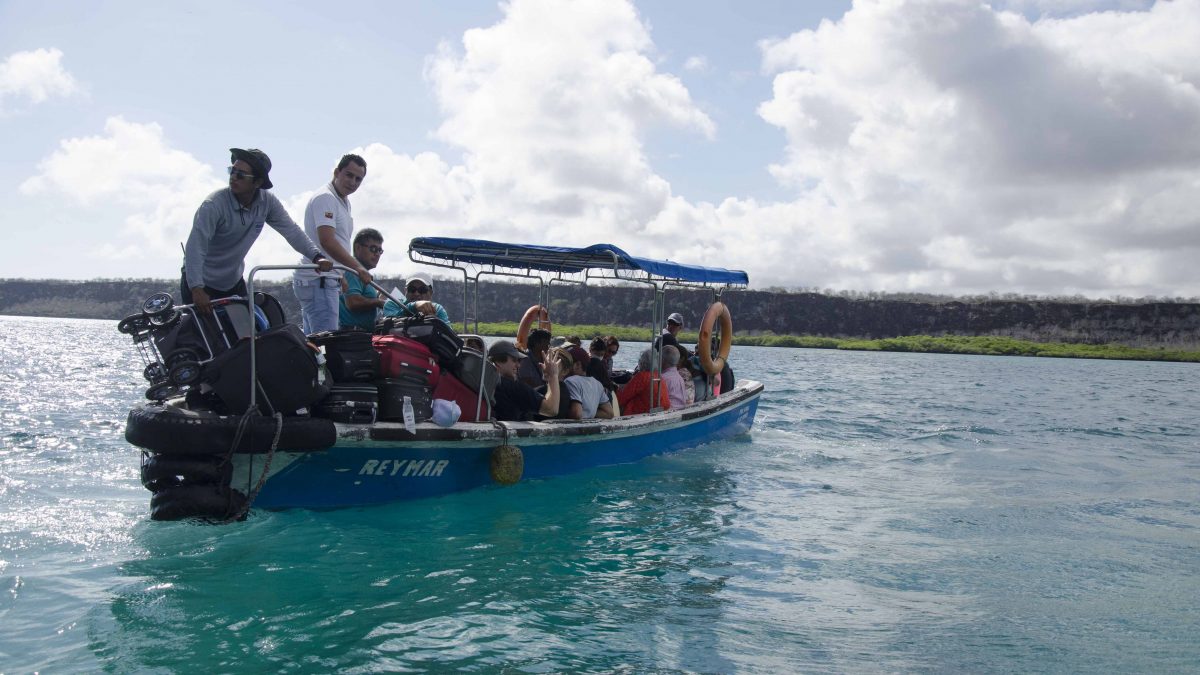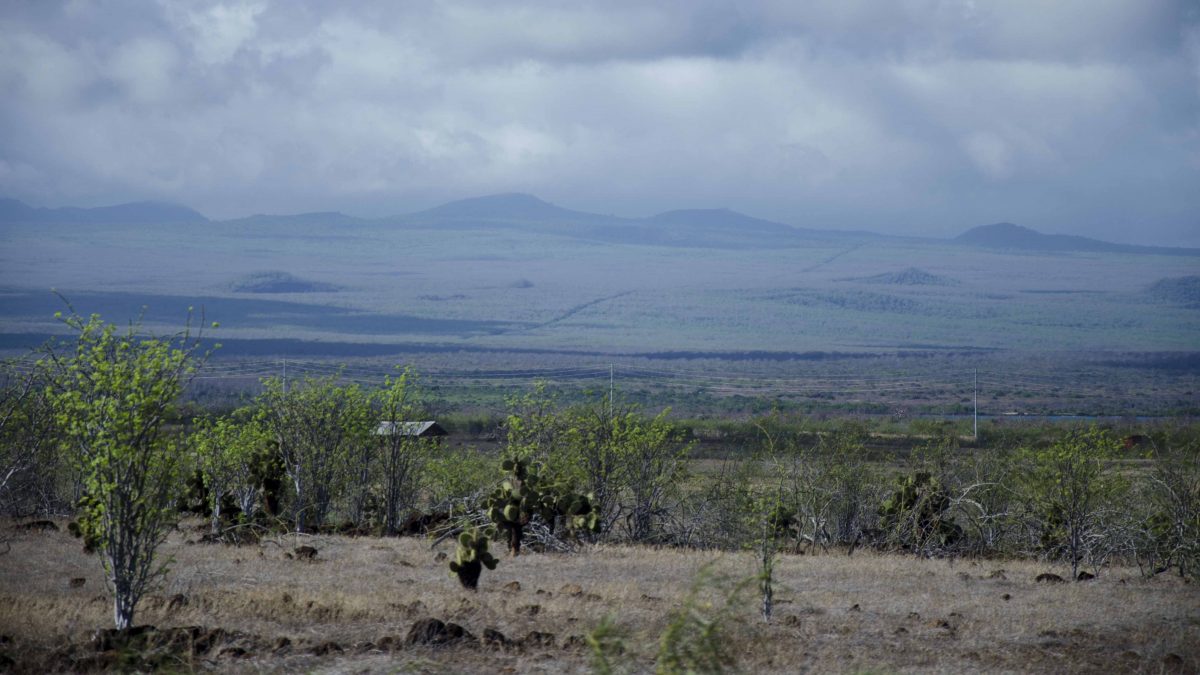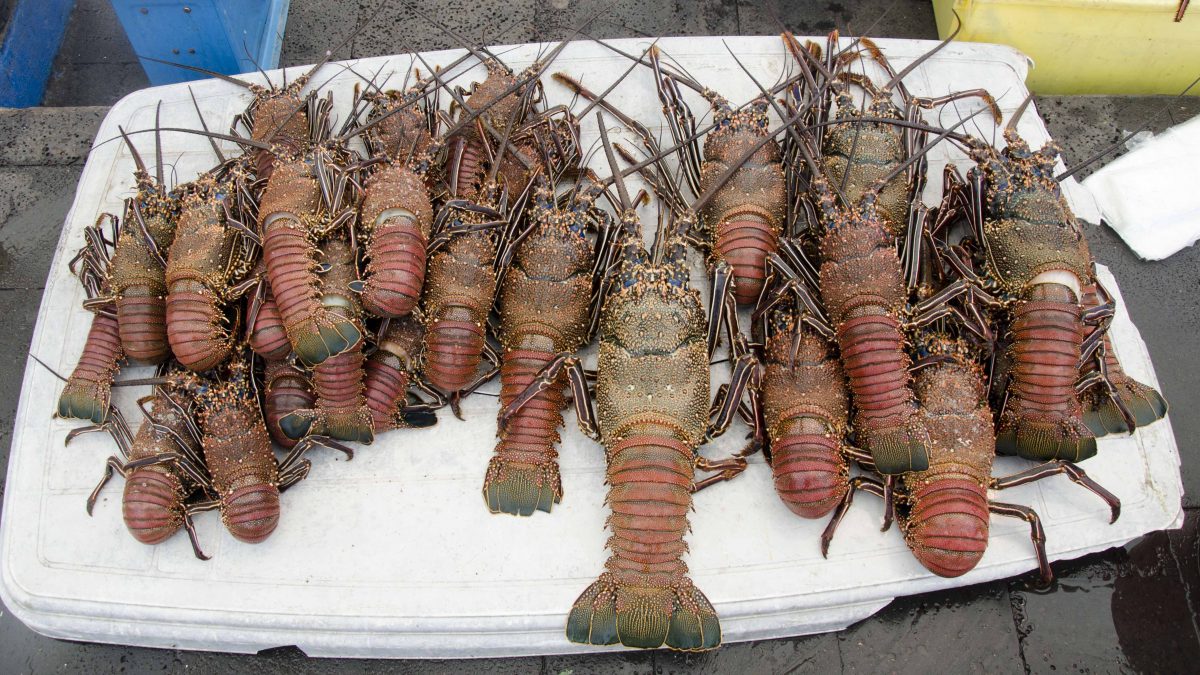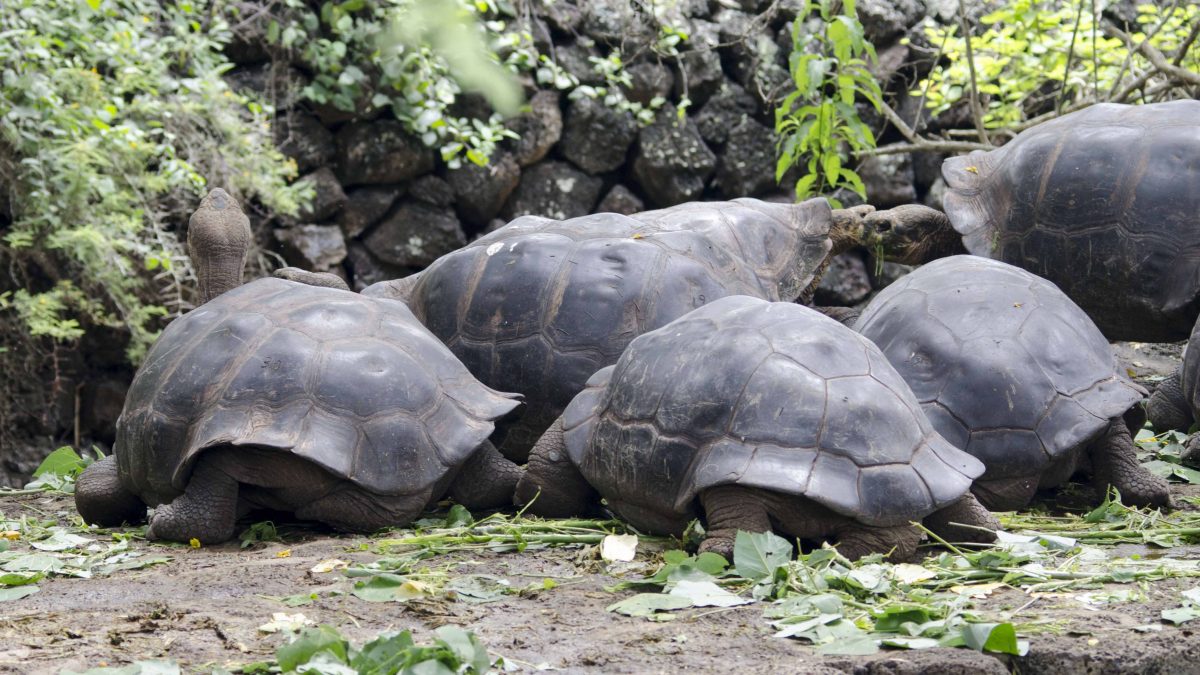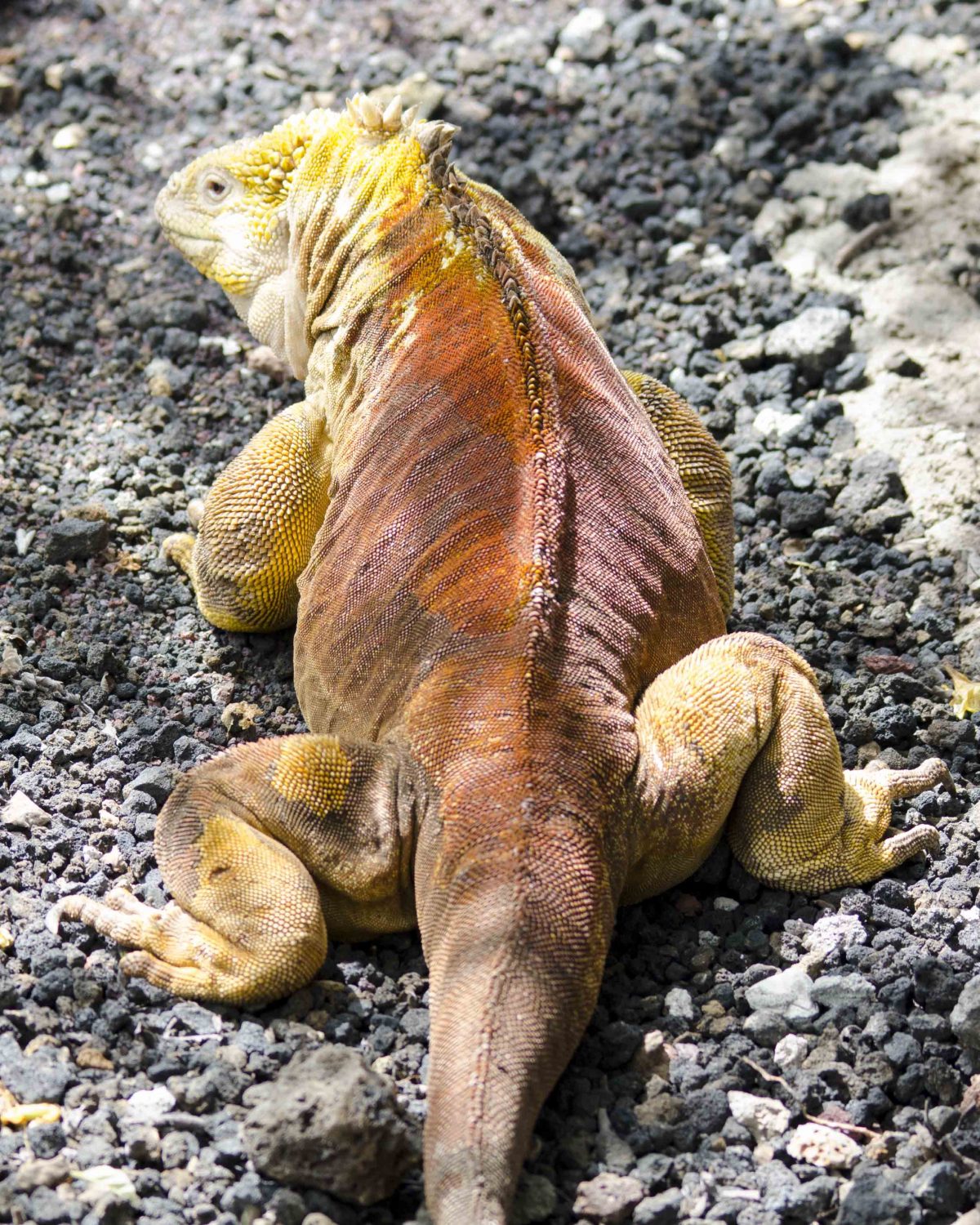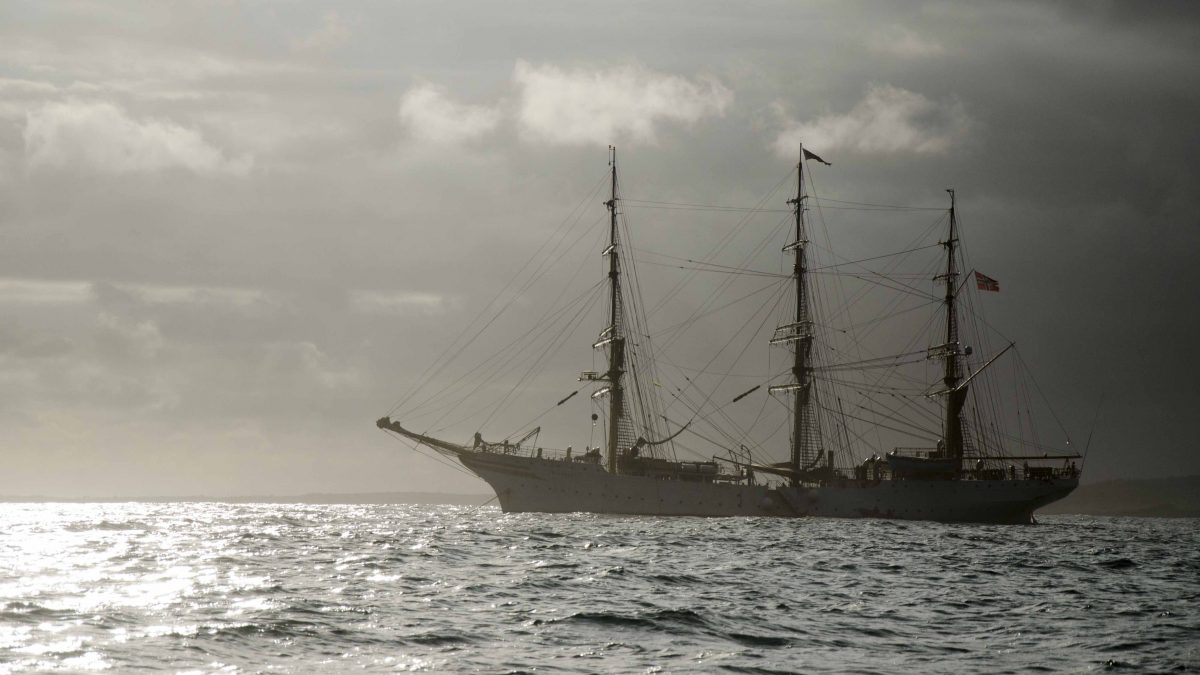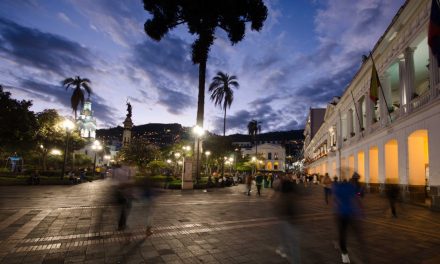As responsible travelers evolve, so do the stories we share.
This article is part of our living archive — trusted content we continue to care for.
First published on January 10, 2016 • Last updated on May 22, 2017.
Our long travel day ended up being a long one indeed.
We arrived in the early morning hours to the Quito Airport to give ourselves enough time to request our transit pass ($20), to have our bags checked for fruits and vegetables, and then to manage the basics of air travel, like checking in and passing through security.
Fortunately, we had scheduled a direct flight from Quito to Baltra, the island with an airport that is closest to Santa Cruz Island. The flight was a short 2 hours. If we had taken the more common flight with a leg via Guayaquil, we would have added a minimum of 2 hours to our travel time. Our day was already going to be a long one, so taking the early morning direct flight was definitely worth it.
We arrived to light rain in Baltra, a reminder that this is the rainy season, even on some of the driest parts of the islands. In fact, looking across the desert towards the highlands of Santa Cruz Island, we could see a faint dusting of light green across the hillsides covered with the normally dead and dry looking Palo Santo.
Although we had arrived in the Galapagos, our trip for the day was far from done. From the Baltra Airport, we took a bus to the ferry. That was about 20 minutes. Then we boarded the ferry to cross the turquoise colored Itabaca Canal, only about a five minute trip but the loading and unloading makes this part quite a bit longer. If you have never encountered lines of people in South America, this is probably not the best time to learn the intricate rules of who can cut and who can’t but just to be patient and realize that you will get on the ferry yourself. Eventually.
Most people board a bus at this point but our travel agent, Galapagos Alternatives, had arranged for a driver. I was thankful for a faster form of transportation and didn’t even wince when he passed other cars on the road. I knew we still had a long day ahead of us. The trip from the port at Itabaca to Puerto Ayora was about an hour long and we were able to see the damage caused by the first El Niño storm a few days ago. The road is very passable but damage to drainage ditches and to a very well-used bike route will take much longer to repair.
We arrived to Puerto Ayora at about 10:30am (taking into account the 1 hour time change from the mainland), giving us some time to walk around, after dropping of our bags in the Galapagos Alternatives office, and grab a quick lunch before our 2pm boat to Isla Isabela. At this point, some of you might be wondering why I planned such a long travel day. In order to visit three islands, one long travel day has to happen somewhere. A half day plane and a half day boat is much more doable for me than taking both legs in a boat, which is what would have happened if we started our adventure by staying on Santa Cruz Island first.
Since breakfast seemed like hours ago, we had an early lunch at the Descanso del Guia, some of the best local food to be found. If you want to eat Ecuadorian while on Santa Cruz, especially breakfast, we highly recommend it. You will sit side by side with local guides, tour operators as well as ship captains and crew. If you’re extra hungry, order the Bolon Completo, a huge green plaintain dumpling served with beef stew, rice, and a fried egg and accompanied by coffee and juice.
Eating an early lunch helps make sure that most of the food is digested before embarking on the cross-island boat trip. For those that get easily sea sick, this is an important point. Launches that travel from island to island are a mixed bag – some truly make the crossing in a fast and smooth manner but many more provide hot, sticky rides in closed room conditions and bounce around the ocean like a ride gone bad at Disneyland. To guarantee the best position for a sea sick free experience, let the crew know that your are likely to get sick and they will quickly try to find you a spot with a view of the horizon and an ocean breeze. You might get wet but that is far better than getting sick. For those who want to take extra precautions, purchase dramamine patches or anti-sea sickness bracelets before coming to the islands.
After lunch, we still had a couple of hours in town and a couple of hours is all you need to visit the Charles Darwin Center in Puerto Ayora so that’s what we did. As we walked through town, we passed the fish market and the normal vendors were no where to be seen. But there were lobsters on display, row upon row of fresh lobster. We had arrived at the tail end of the season (please forgive me the pun). We knew that would be asking a lobster dinner sometime soon.
The sun was out and the temperature was hot, hot, hot. We walked and dripped sweat while looking at the animals held in captivity at the Research Station. Although the organization is famous for scientific research, none of that is very apparent. There are lots of buildings, some with interpretative displays, all hot and un-ventilated. We chose to skip them this time around. We did take the time to visit the animals. The Charles Darwin Research Station would more aptly be called a very small zoo, with a few huge land tortoises and a trio of golden iguanas that we hope to see in the wild at South Plaza Island later in our trip.
Next, we picked up our bags at the office and headed to the port. Boarding the boat to Isla Isabela was another exercise in frustration. Lines that aren’t lines and many people unsure of what they are doing. Luckily we had our trip reserved and our travel coordinator new exactly where we needed to be. Then a water taxi out to our launch (how many forms of transportation can a family take in one day?) and finally we board the boat.
As we were headed out of the small port to open water, our captain turned back. Engine problems. But he didn’t head back to port, just to calmer water so that his mechanic can fix things on the spot. We spent a little time wondering what’s going on, though those of us with some Spanish figured out that it was a wiring issue and see that conclusion confirmed when the mechanic starts stripping new wire to place into the engine. And then we’re off.
A trip that normally would take two hours was a little over three hours long. Between the newly wired engine and another that knocked like it had not seen a tune up in recent history, I think we were lucky to arrive in that short of a time. The water was choppy, making in a wild ride for many. A couple of people were sick beyond belief. I swear by my handy-dandy pair of bracelets – even if it is psychology at work, they have helped me hold severe sea sickness at bay many, many times.
It was late in the afternoon when we pulled up to Puerto Villamil. A stunning three mast schooner was anchored just outside the harbor and made the small island look more like a place Darwin would have visited. I just had to look past the scattering of small buildings along the small beach and see the slopes of the giant volcano behind the town and feel that little itch that says, “I want to see that place” to feel just a little kinship with the world famous traveler and explorer. We have 12 days on these islands. He had 5 weeks. I wonder who will see more?
To see the itinerary for this trip, please see The Dream Galapagos Land Based Tour.

